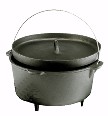PET is one of the oldest of the recyclable plastics, dating back to the 1940's. Unlike most plastics, it lends itself to recycling. According to the EPA, recycling a pound of PET saves approximately 12,000 BTU’s of energy consumption. And since PET is totally recyclable and the basis for many synthetic fibers, here's what it can yield:
- Fourteen 20 oz. PET bottles yield enough fiber for an extra large T-shirt.
- Fourteen 20 oz. PET bottles make one square foot of carpet.
- Sixty-three 20 oz. PET bottles make a sweater.
- Fourteen 20 oz. PET bottles yield enough fiberfill for a ski jacket.
- Eighty-five 20 oz. PET bottles make enough fiberfill for one sleeping bag.
PET is also extremely lightweight in relation to its strength. Consider the ubiquitous 1 and 2 liter soft drink bottles. Strong, featherweight, the ideal container to fill with liquids and toss into the backpack. And it can die and be resurrected several times during the trek, and even then the remains can be returned to civilization where they go right back into the system. So, here are four uses for a two-liter bottle:
- Bring your bottle into the wilderness full of water or your favorite beverage. Consume!
- Cut the bottle three inches from the bottom, and use the bottom for a cereal or mixing bowl.
- Cut the bottle four inches from the top. Remove the cap and nest a coffee filter into the funnel-shaped top. Use this to pre-filter ground water before treatment.
- Use the remaining six inch ring of plastic as a ground lantern. Put a candle on the ground and set the ring around it to keep the wind out.

Some other musings on the trail use of PET:
- A plastic bottle also makes a good latrine for cold weather camping. (You don't have to 'go' very far from your sleeping bag). Keep it just out side the tent flap.
- Use a bottle as a large float for fishing. Tie a nylon line on the rim of the jug, long enough to throw the jug out at least ten feet. Tie the other end to a limb on the bank. Put a stage of fishing line, a hook and sinker onto the rim of the jug and bait it. Toss the baited jug out like a giant bobber.
So, what's your PET project?






